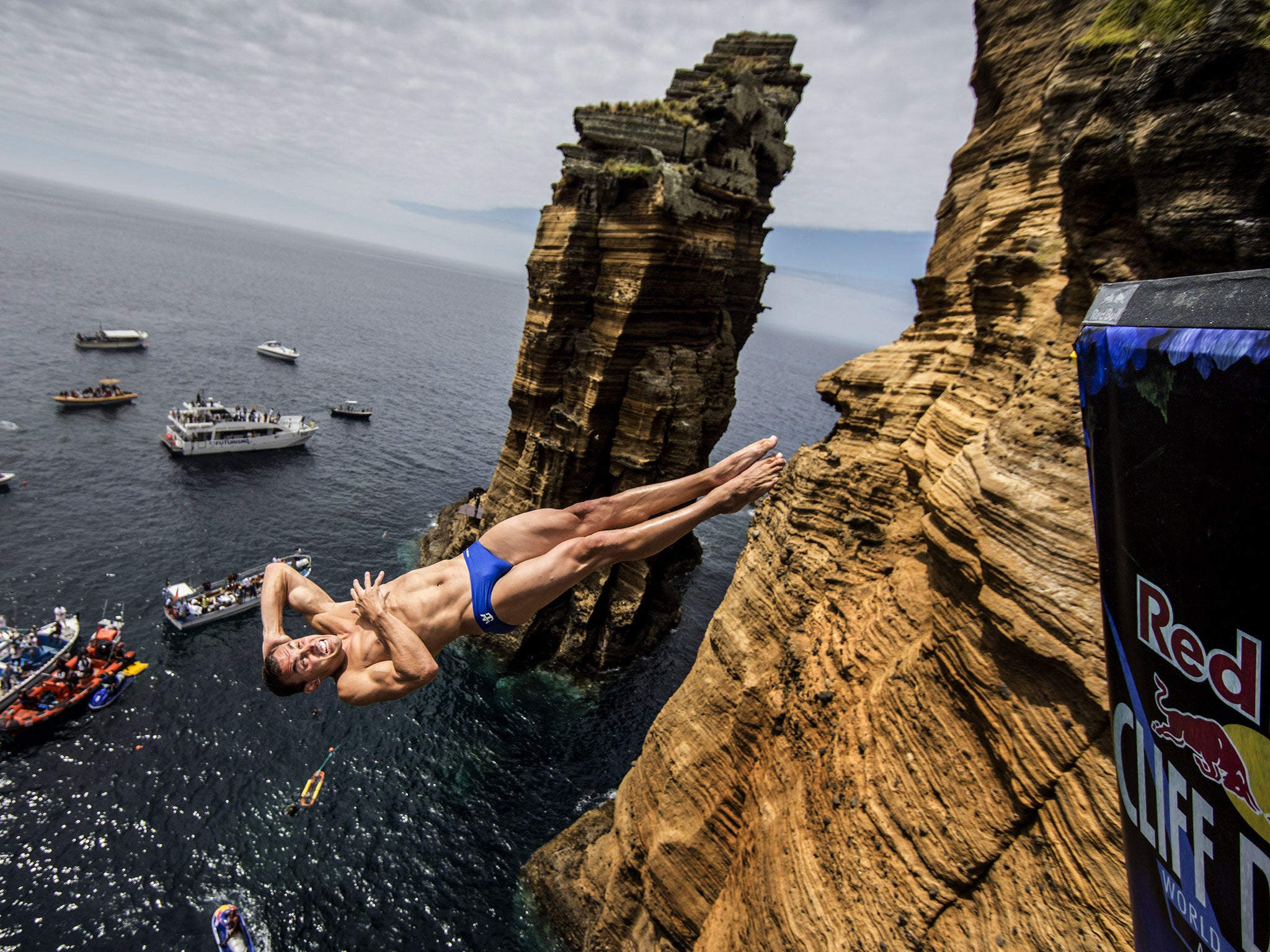Red Bull’s Cliff Diving World Series: The competition’s on a cliff edge
With seriously high stakes, it's an extreme arena

Your support helps us to tell the story
From reproductive rights to climate change to Big Tech, The Independent is on the ground when the story is developing. Whether it's investigating the financials of Elon Musk's pro-Trump PAC or producing our latest documentary, 'The A Word', which shines a light on the American women fighting for reproductive rights, we know how important it is to parse out the facts from the messaging.
At such a critical moment in US history, we need reporters on the ground. Your donation allows us to keep sending journalists to speak to both sides of the story.
The Independent is trusted by Americans across the entire political spectrum. And unlike many other quality news outlets, we choose not to lock Americans out of our reporting and analysis with paywalls. We believe quality journalism should be available to everyone, paid for by those who can afford it.
Your support makes all the difference.The impact, it’s said, is like smashing into a brick wall. As your body free-falls through the air into the water 27 metres below, you become a human projectile, travelling at 50mph. Just watching videos of the first event in the Red Bull Cliff Diving World Series (now in its fifth year) at La Rochelle in France is enough to give you vertigo.
Yet as Russian Artem Silchenko lifted his trophy on Saturday (a model of the 600-year-old tower he had just rather elegantly leapt from), he did so to the sound of 70,000 roaring fans.
Cliff diving, it seems, has quite a following. Maybe unsurprisingly, given that it is organised by a firm with the global reach of Red Bull. Either way, over the next five months, 14 divers from 13 countries will follow the Red Bull flag, travelling around the globe to leap, clad only in Speedos, from Copenhagen Opera House, a volcanic stone in the Azores, an Italian castle, a Welsh cliff, a pier in Boston, an outcrop in Thailand and a cliff in Brazil.
Each of these will be roughly three times the height of an Olympic diving board and competitors are expected to make a series of ballet-like twists and turns as they fall, and are marked for their efforts by five judges. For the two lowest scorers it is a warm shower and a flight home. The rest move on to the next leg of the competition.
Although the Russian is currently topping the leaderboard, the favourites are actually two Brits: former champion Gary Hunt and Olympic diver Blake Aldridge. Both are noted for their panache in the air – something incredibly important, not just because style means points, but also because if you enter the water incorrectly after your three seconds of flight, you’re likely to break your back.
Of course, Red Bull didn’t invent the notion of a person throwing themselves off a cliff and hoping to survive, nor can the company claim to have made it a proper “sport”. It is, in fact, said to have begun as a Hawaiian initiation rite. The former independent chief of the island Kahekili tested his warriors by having them jump after him from his land’s lava cliffs in the 1700s. The site of “Kahekili’s Leap” is now regarded as the sport’s birthplace.
With its mix of medieval danger and high-octane thrill, it is manna from heaven for Red Bull. The company spends a quarter of its annual revenue on marketing ($2.2bn). Most of that goes on events and sport sponsorship – it owns the New York Red Bulls football club outright and a Formula One team, for instance. But it also has a sideline in sponsoring dangerous sports such as freeskiing, ice climbing and snowboard half-piping.
It has, surprisingly for a drink rather than sport brand, mastered the art of spectacle in advertising with aplomb. It provides the cash and infrastructure for people to do high-wire, death-defying stunts while heavily branded in the Red Bull livery. The will-they-survive nature of this reached its peak with Felix Baumgartner’s parachute jump from a “Red Bull” helium balloon 24 miles into the world’s stratosphere.
It is unlikely anyone will be hurt in the next seven rounds, though, as the divers are the crème de la crème of their particularly peculiar sport. Or then again, perhaps Red Bull really does give you wings.
Join our commenting forum
Join thought-provoking conversations, follow other Independent readers and see their replies
Comments